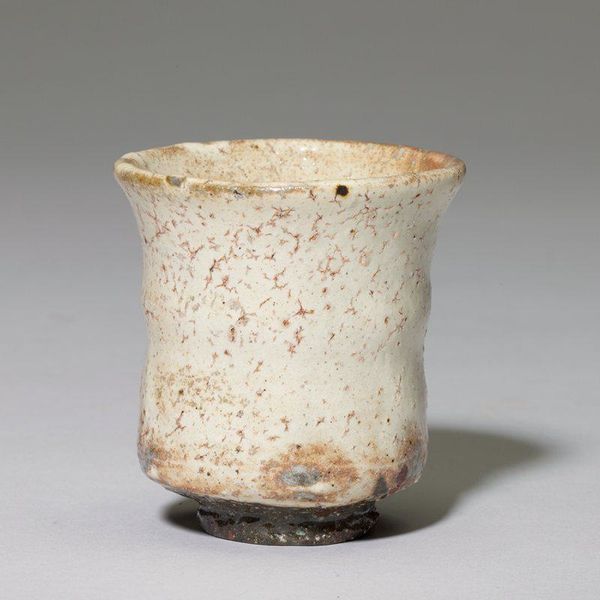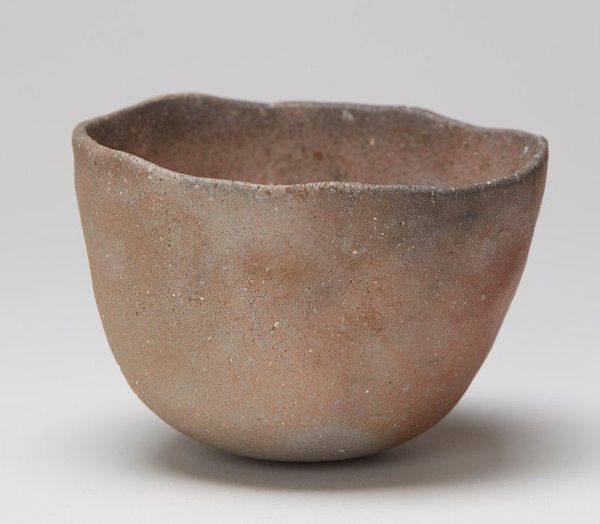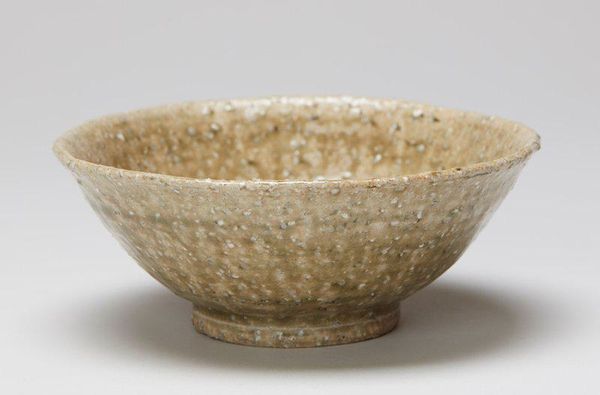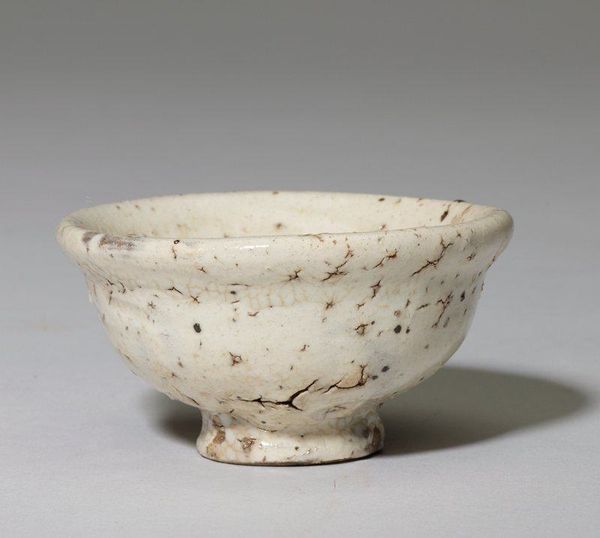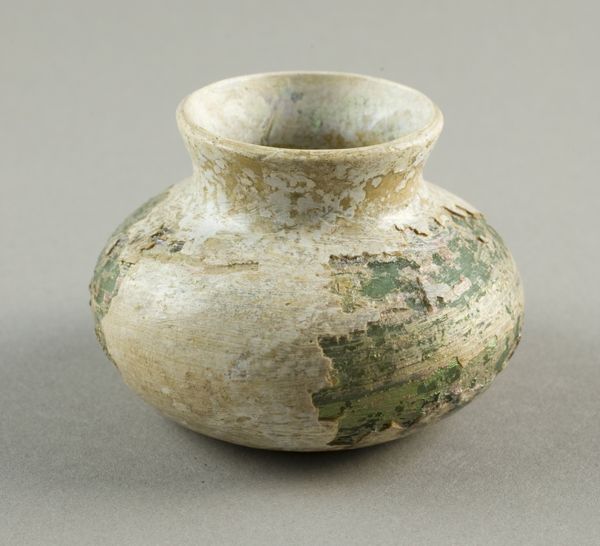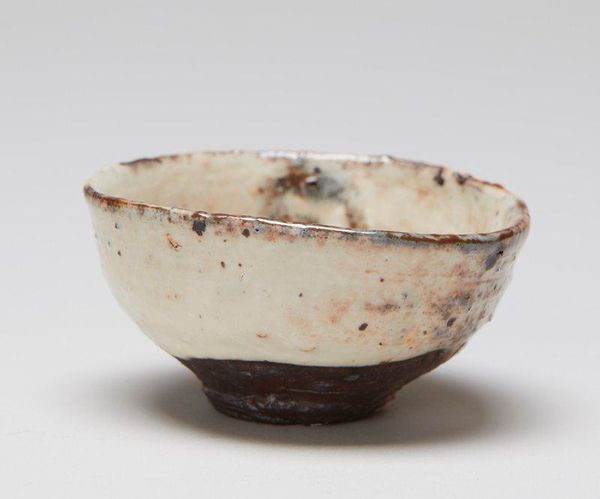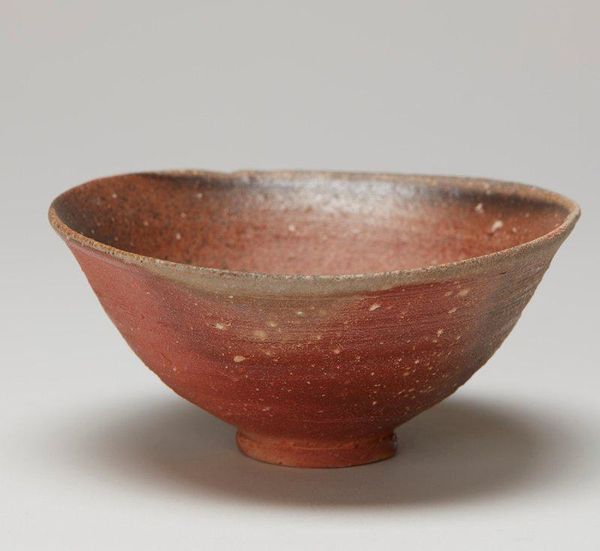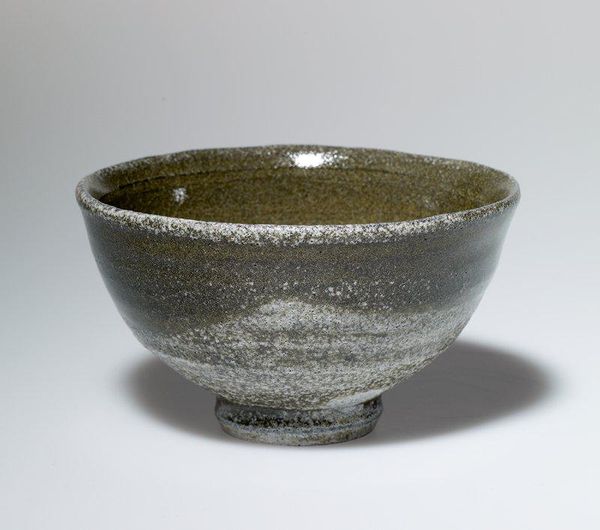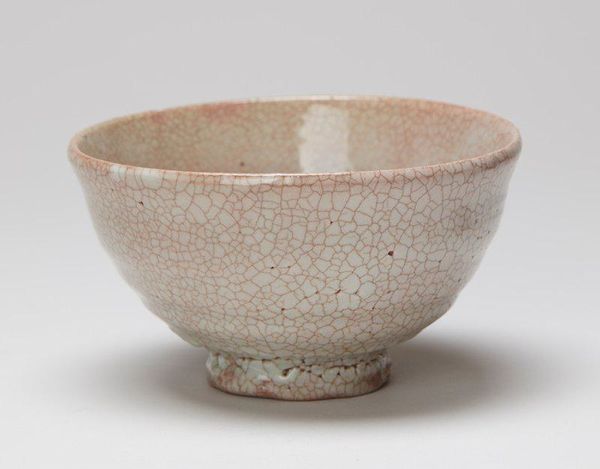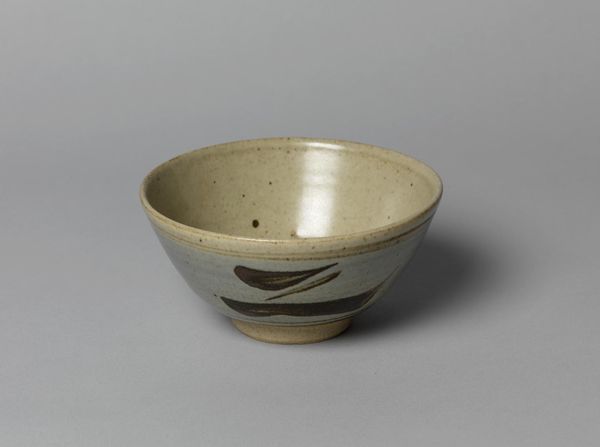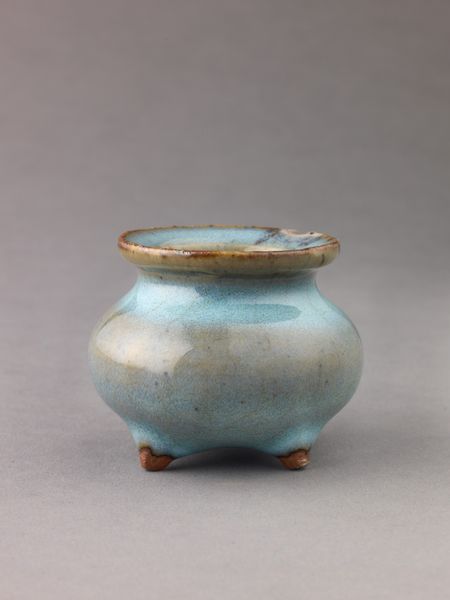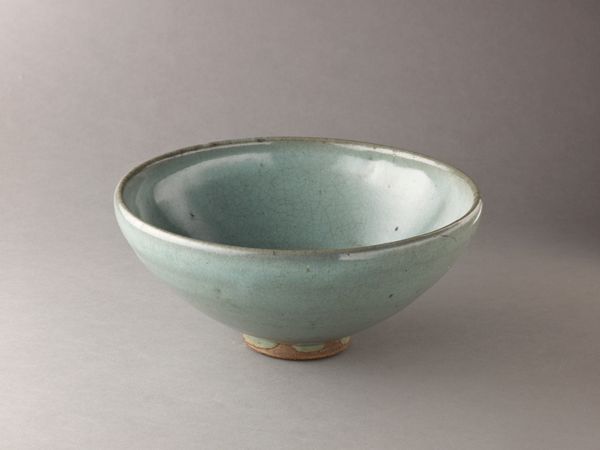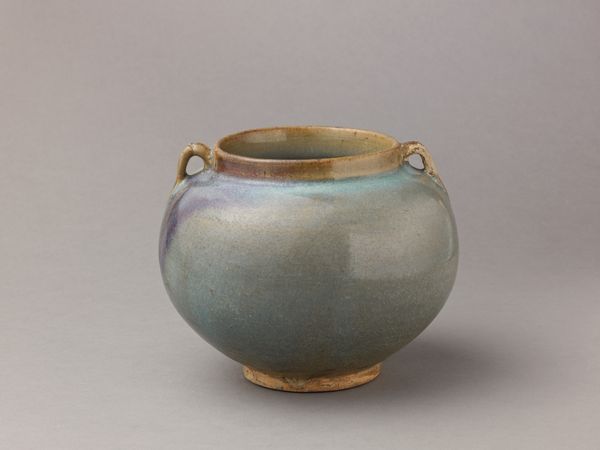
ceramic, earthenware
#
asian-art
#
ceramic
#
earthenware
#
stoneware
#
ceramic
Dimensions: 2 1/16 x 3 x 3 in. (5.24 x 7.62 x 7.62 cm)
Copyright: No Known Copyright
Editor: This is a Madaragaratsu sake cup, a ceramic stoneware piece made around the 20th century. I'm struck by its wabi-sabi aesthetic - the imperfection in the glaze and form give it so much character. How do you interpret this piece within its historical context? Curator: That’s a great observation. Let's consider the historical context of Japanese ceramics, particularly in relation to political power and social structures. How do you think a humble sake cup like this intersects with notions of class, taste, and even rebellion against established norms? Editor: Rebellion? I wouldn't have thought of it that way. It just seemed like an embrace of simplicity and naturalness. Curator: Exactly! Think about the tea ceremony and the carefully cultivated "naturalness" valued within that ritual. Now consider that during certain periods, these ceremonies, and the objects associated with them, became spaces where alternative ideologies could be subtly expressed. The embrace of imperfection can be seen as a quiet subversion of the dominant culture's obsession with perfection and ostentation. How does viewing the cup through this lens shift your understanding? Editor: It's almost like the cup becomes a silent symbol of resistance. It makes me wonder about the people who used it. Curator: Precisely. It invites us to contemplate their lives and their values. Even everyday objects can carry deep historical and social weight, challenging dominant narratives through their very existence. Editor: Wow, I’ll never look at a teacup the same way again. Curator: Hopefully, you’ll view all objects, from any place, as carriers of meaning. It all begins with noticing and asking, ‘Whose stories are being told, and whose are missing?'
Comments
No comments
Be the first to comment and join the conversation on the ultimate creative platform.
